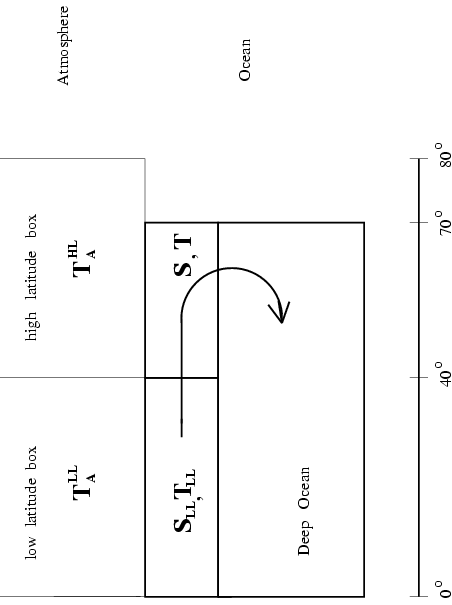Dynamics and predictability of Stommel's box model: A phase space perspective with implications for decadal climate variability
Lohmann, G., and Schneider, J., 1999,
Tellus 51 A (2), 326-336. doi:10.1034/j.1600-0870.1999.t01-1-00012.x
link to Tellus online
The dynamics and predictability of Stommel's (1961) box model of the
thermohaline circulation is studied.
This nonlinear model with idealized geometry of the North Atlantic
is solved exactly.
A phase space analysis of the model
reveals that the optimal perturbation affecting long-term climate variability
is provided by high latitude haline forcing in the Atlantic ocean,
although this perturbation has little resemblance with the most unstable mode of the system and the leading EOF.
Furthermore, the predictability problem is investigated
by means of singular vector analysis and
the evolution of the probability distribution function.
Uncertainties in the oceanic initial conditions do increase in the phase space of the model.
In the stochastically forced box model with identical oceanic initial conditions,
the climate predictability is examined for the damped persistence forecast.
We find that the loss of the predictability is related to
the different stages of the variance evolution which is also measured by the relative entropy.
Our analysis shows that the non-normal system matrix of Stommel's model
does affect the dynamics and predictability of the system
which is
useful for the interpretation of
long-term
climate variability and predictability.
-> available as
pdf
or
plain PostScript file
 Phase Space Dynamics
Phase Space Dynamics
 Configuration
Configuration
 Configuration
Configuration
 Phase Space Dynamics
Phase Space Dynamics